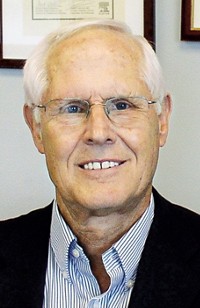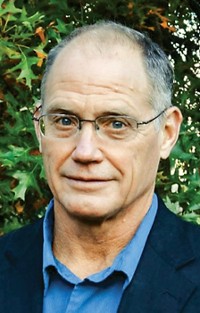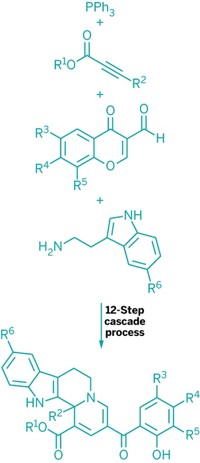Advertisement
Grab your lab coat. Let's get started
Welcome!
Welcome!
Create an account below to get 6 C&EN articles per month, receive newsletters and more - all free.
It seems this is your first time logging in online. Please enter the following information to continue.
As an ACS member you automatically get access to this site. All we need is few more details to create your reading experience.
Not you? Sign in with a different account.
Not you? Sign in with a different account.
ERROR 1
ERROR 1
ERROR 2
ERROR 2
ERROR 2
ERROR 2
ERROR 2
Password and Confirm password must match.
If you have an ACS member number, please enter it here so we can link this account to your membership. (optional)
ERROR 2
ACS values your privacy. By submitting your information, you are gaining access to C&EN and subscribing to our weekly newsletter. We use the information you provide to make your reading experience better, and we will never sell your data to third party members.
Synthesis
Ernest Guenther Award In The Chemistry Of Natural Products
by Stu Borman
January 20, 2014
| A version of this story appeared in
Volume 92, Issue 3
Sponsored by Givaudan
In 2001, Dennis P. Curran and coworkers at the University of Pittsburgh introduced an organic synthesis technique called fluorous mixture synthesis that the group has leveraged into a powerful approach for making natural products and other complex organic compounds enantioselectively.Curran is receiving the Ernest Guenther Award this year for “creative syntheses of natural products and natural product stereoisomer libraries” based on the fluorous approach and other techniques his group has created and refined.
In fluorous mixture synthesis, fluorine-containing tags of different kinds are added to different starting materials, the starting materials are combined and reacted together to produce product mixtures, and the tags are then used to isolate and purify specific desired products from the mixtures. The primary advantages of the technique over conventional nonfluorous syntheses are efficiency and convenience—it saves steps by carrying out reactions in parallel, rather than one by one, and yet still generates pure products conveniently, without a lot of difficult separations fuss.
Some complex fluorous syntheses carried out by Curran’s groups have yielded up to 32 pure final products. “No one has done anything even remotely comparable to what Curran has achieved with fluorous mixture synthesis,” comments chemistry professor Peter Wipf, a colleague at Pitt.
“Curran is also a brilliant strategist,” Wipf notes. This quality is exemplified by the Curran group’s development and use of a technique called tandem radical reactions. The approach, in which short series of radical reactions are used to create natural products and natural-product-like compounds, obviates the need to use protecting-group chemistry and is spare in numbers of steps needed.
Curran and coworkers demonstrated the power of the technique by using it to make substantial amounts of an enantiomerically pure version of a cancer drug called AR-67 for clinical trials. They also used radical reaction chemistry to carry out a highly efficient synthesis of the anticancer agent camptothecin and more than 100 camptothecin derivatives, as well as to synthesize the complex five-fused-ring natural product meloscine.
“Curran’s productivity is superior,” Wipf says. “In well over 100 papers, he describes total syntheses of scores of natural products and hundreds of their analogs and isomers. Each offers a combination of new synthetic chemistry, new tagging or separation methods, structural assignments, bioassays, and more. Many of Curran’s other papers describe creative synthetic methodology advances that are directly applicable to natural products.”
Chemistry professor Samuel J. Danishefsky of Memorial Sloan-Kettering Cancer Center and Columbia University adds that Curran “has had a long and distinguished career spanning the gamut of natural products chemistry, is a real statesman in the field, and has fashioned a wonderful continuity of excellence at Pitt.”
Curran, 60, earned a bachelor’s degree in chemistry from Boston College in 1975 and a Ph.D. from the University of Rochester in 1979.
After serving as a postdoc in chemistry professor Barry M. Trost’s group at the University of Wisconsin, Curran joined the Pitt faculty in 1981. He is currently Distinguished Service Professor and Bayer Professor of Chemistry there.
Curran will present his award address before the Division of Organic Chemistry.






Join the conversation
Contact the reporter
Submit a Letter to the Editor for publication
Engage with us on Twitter